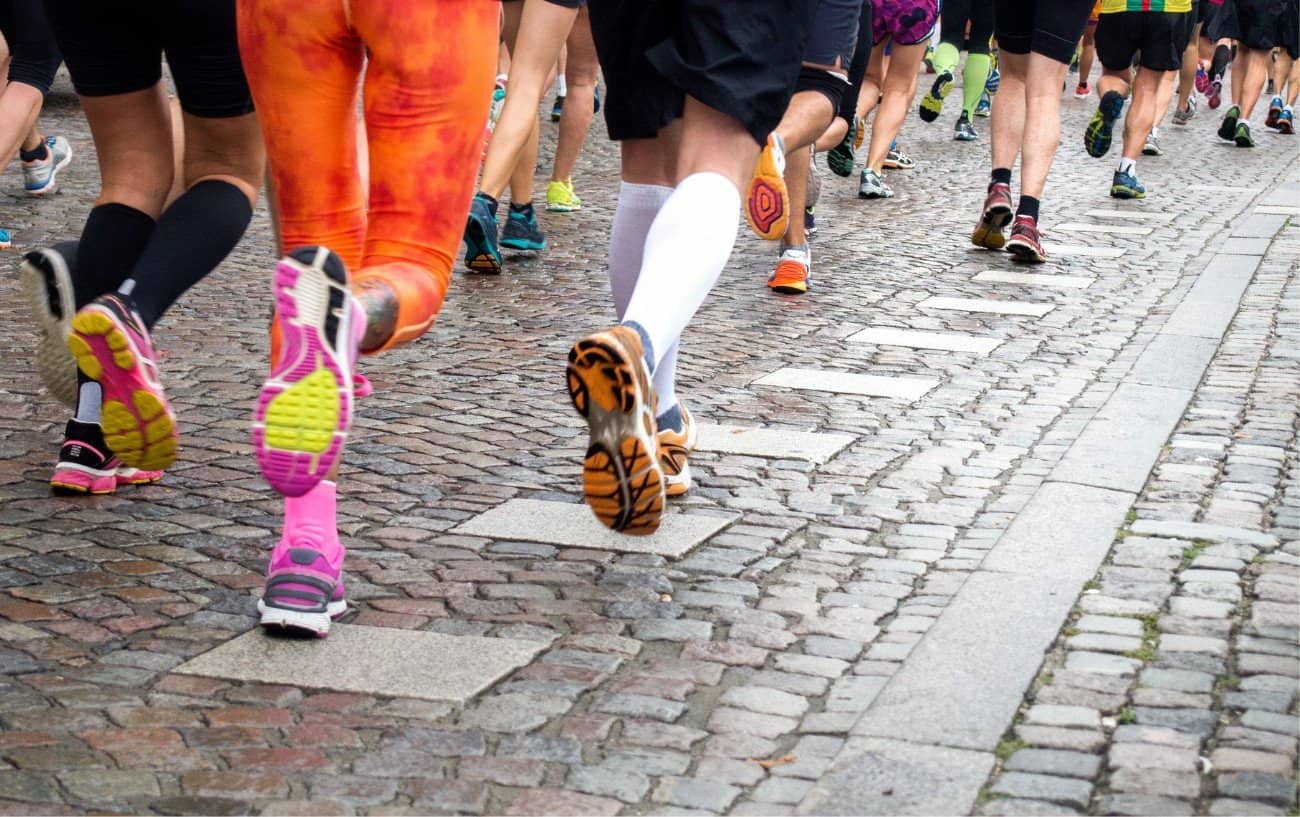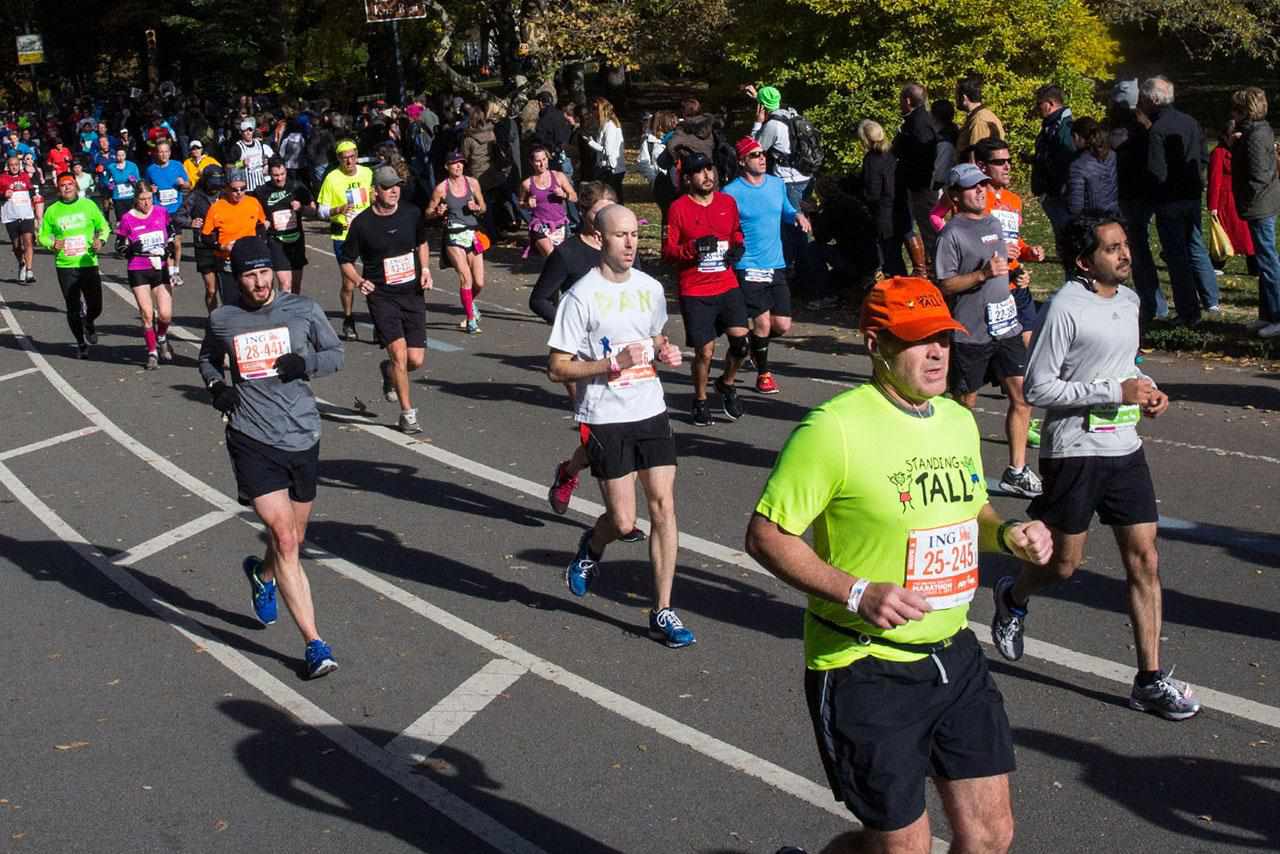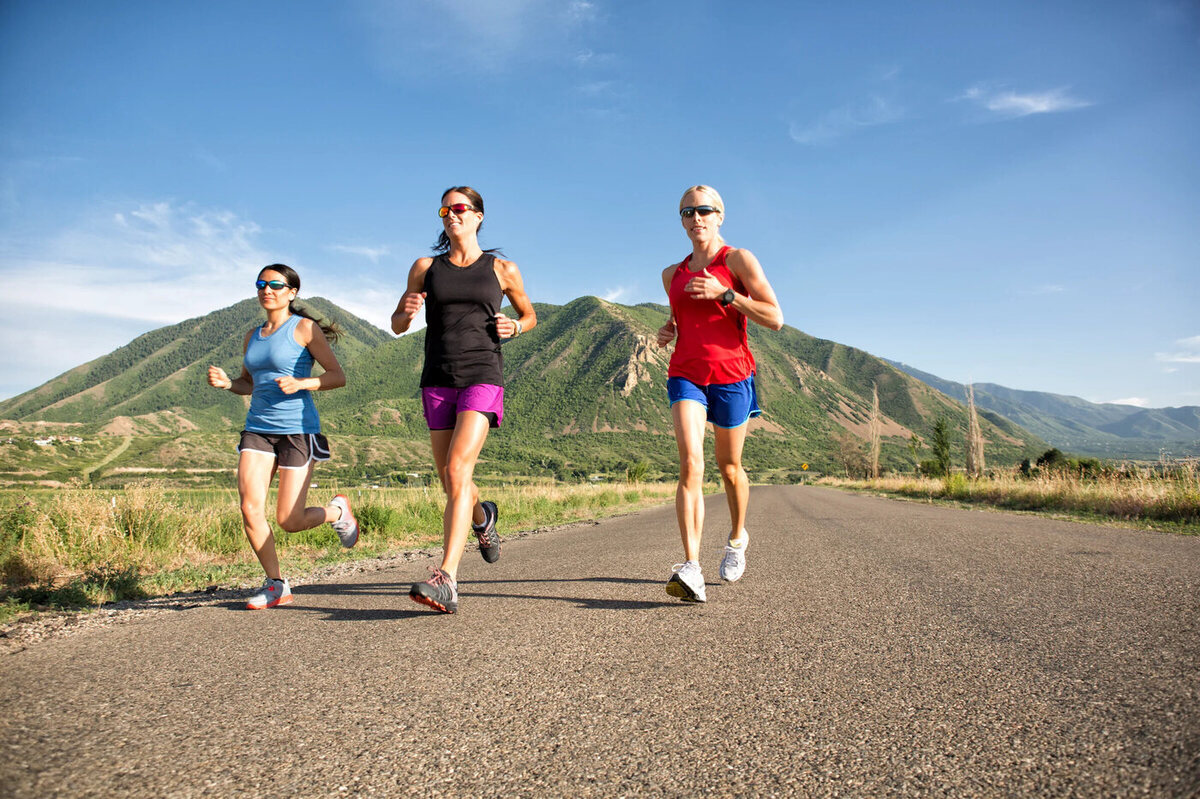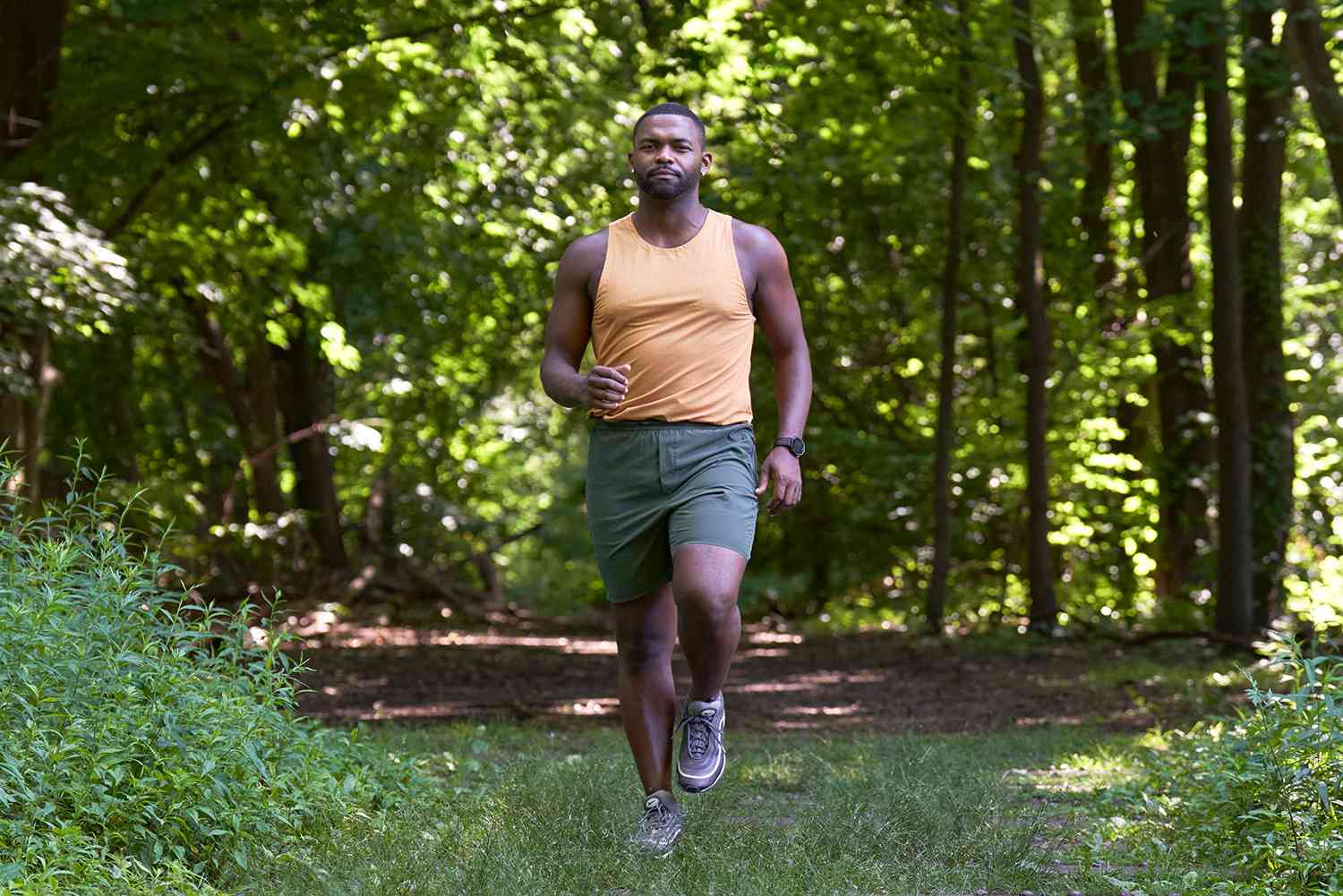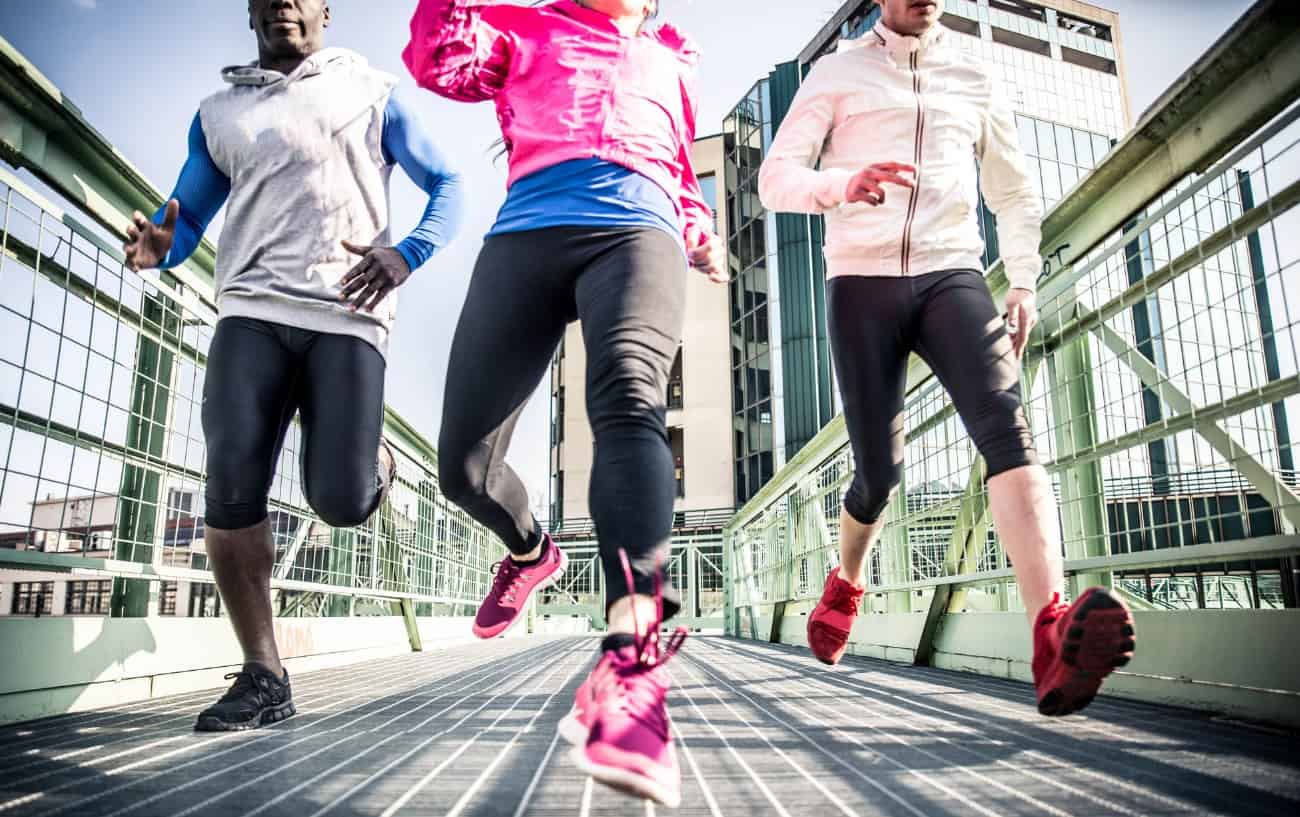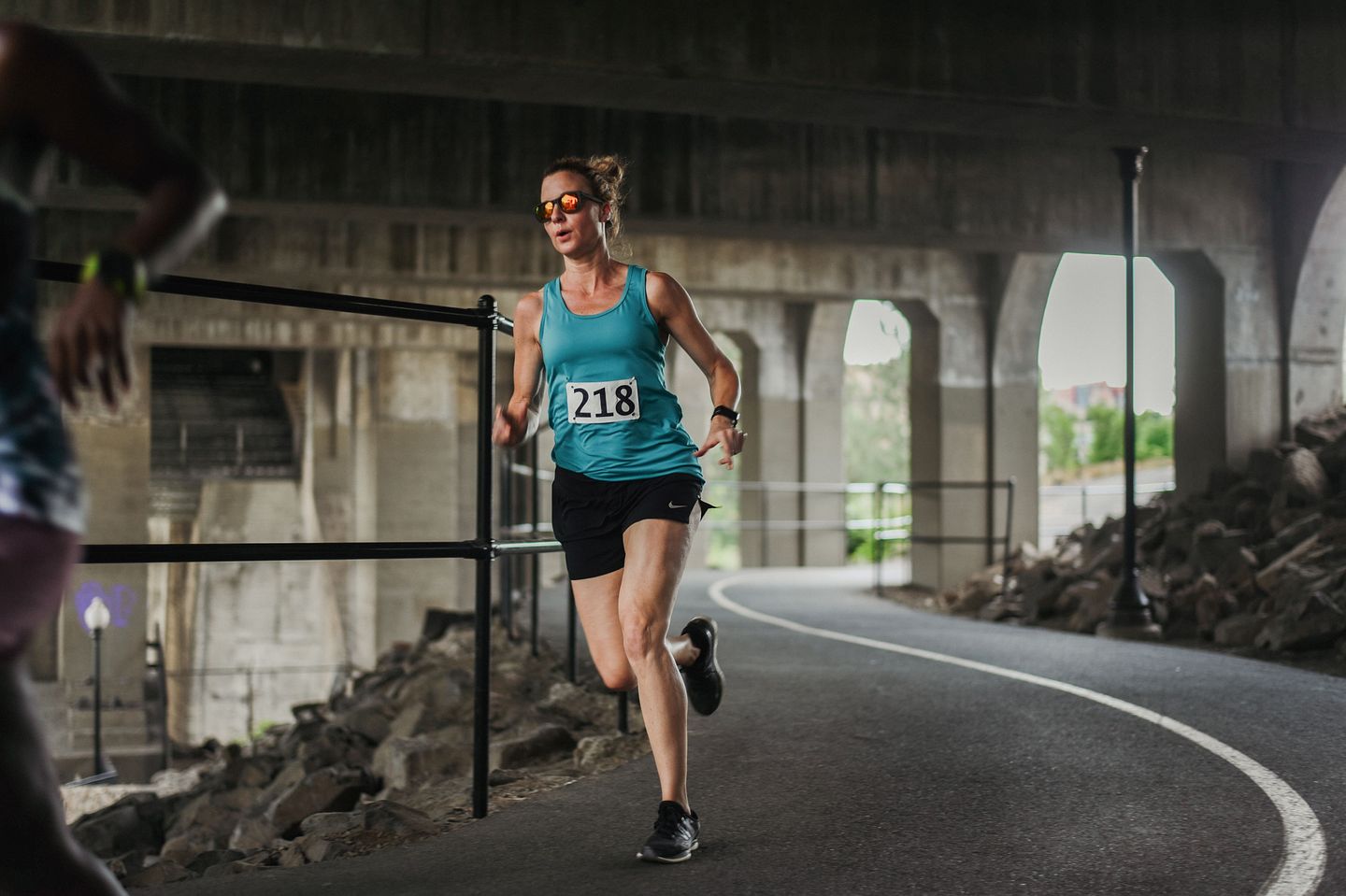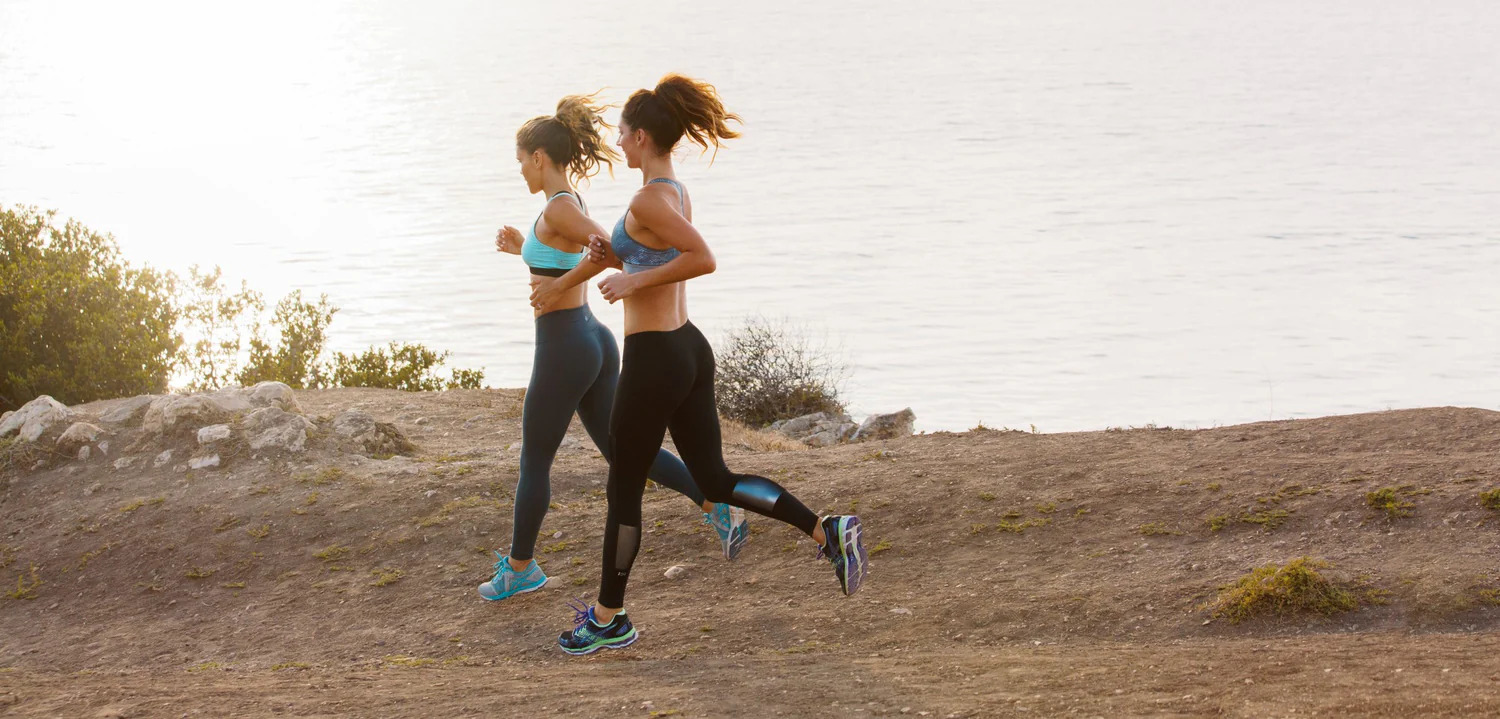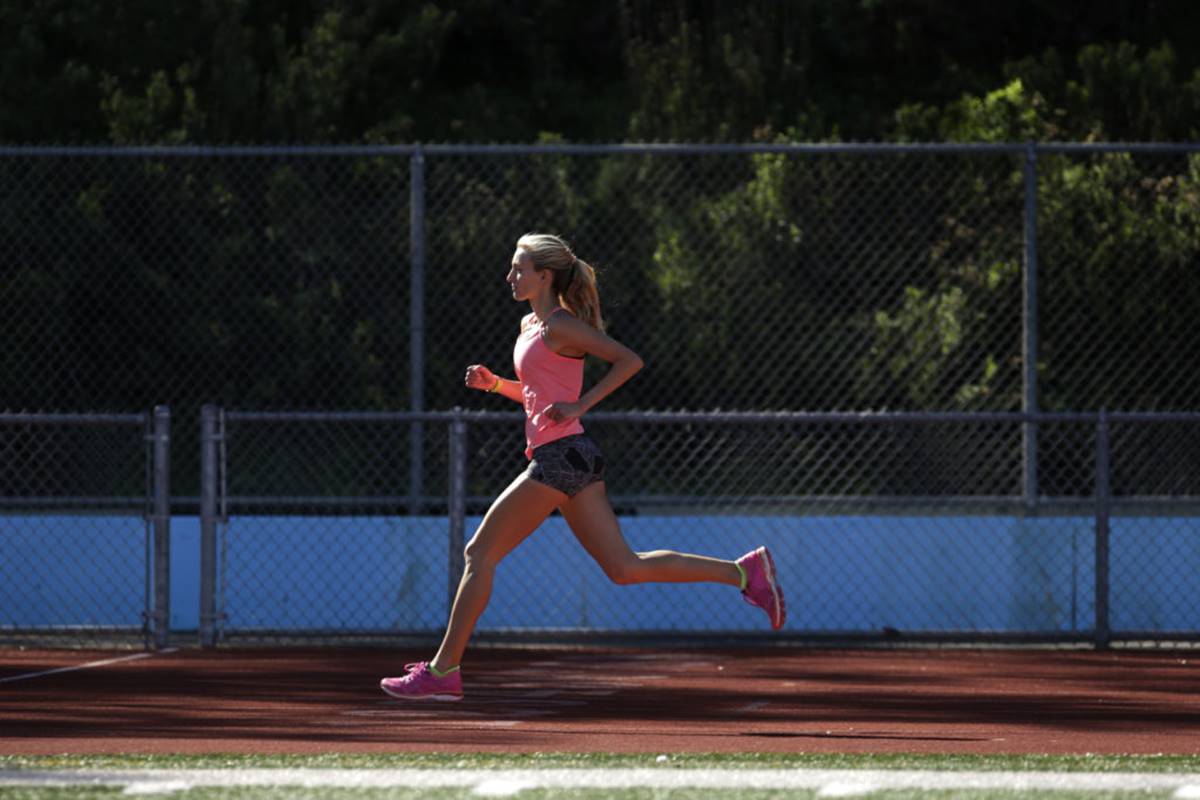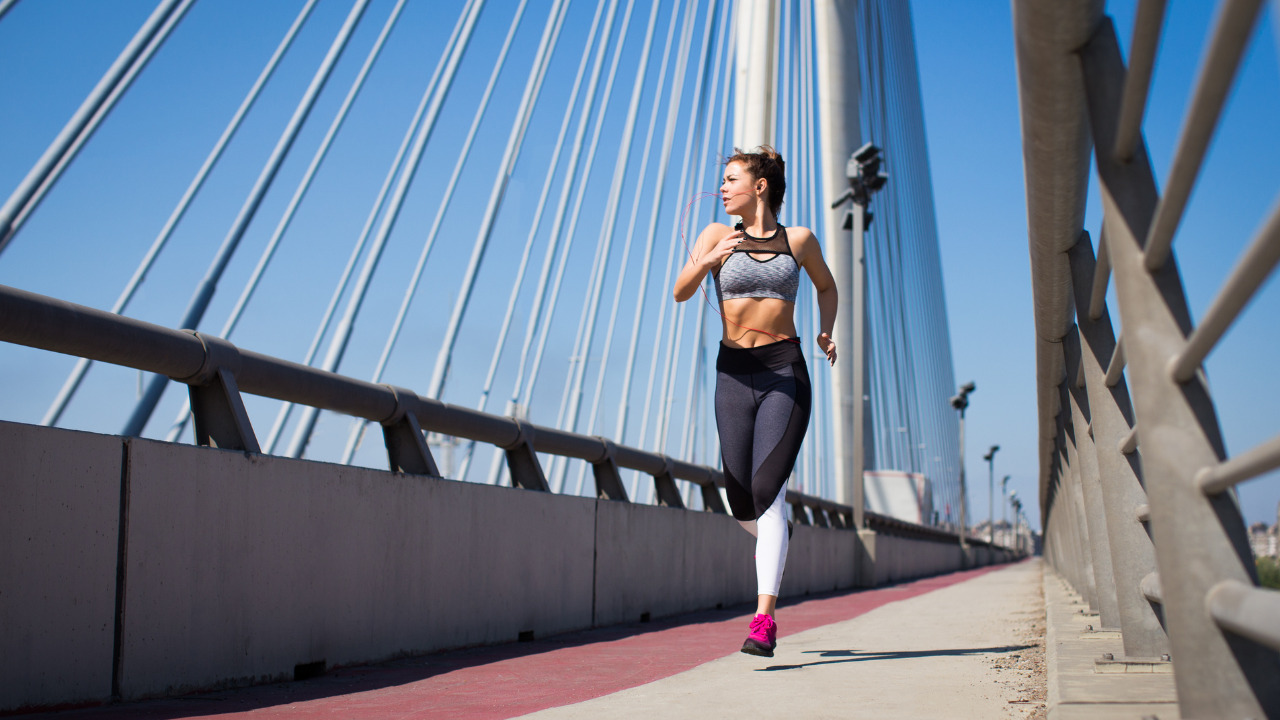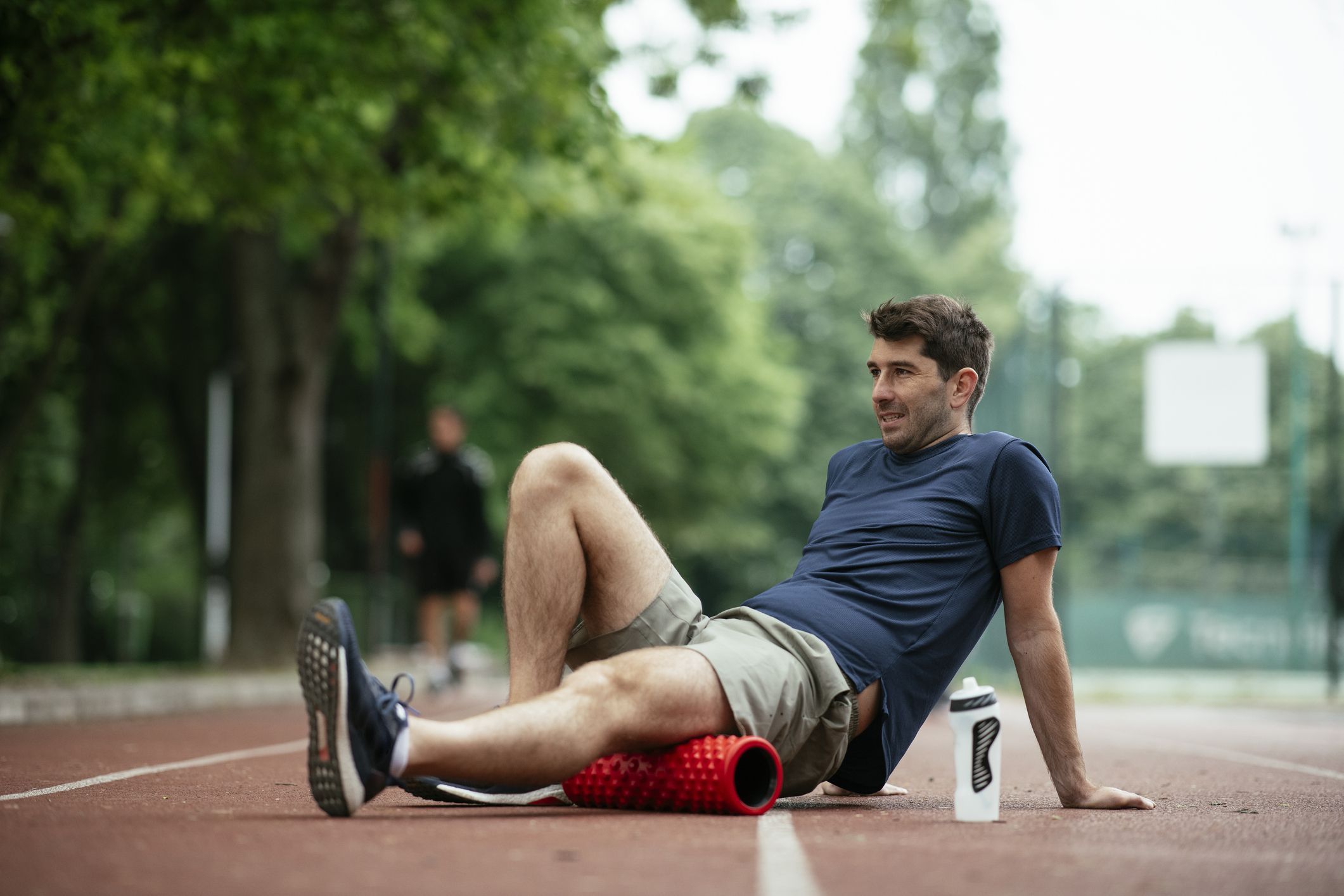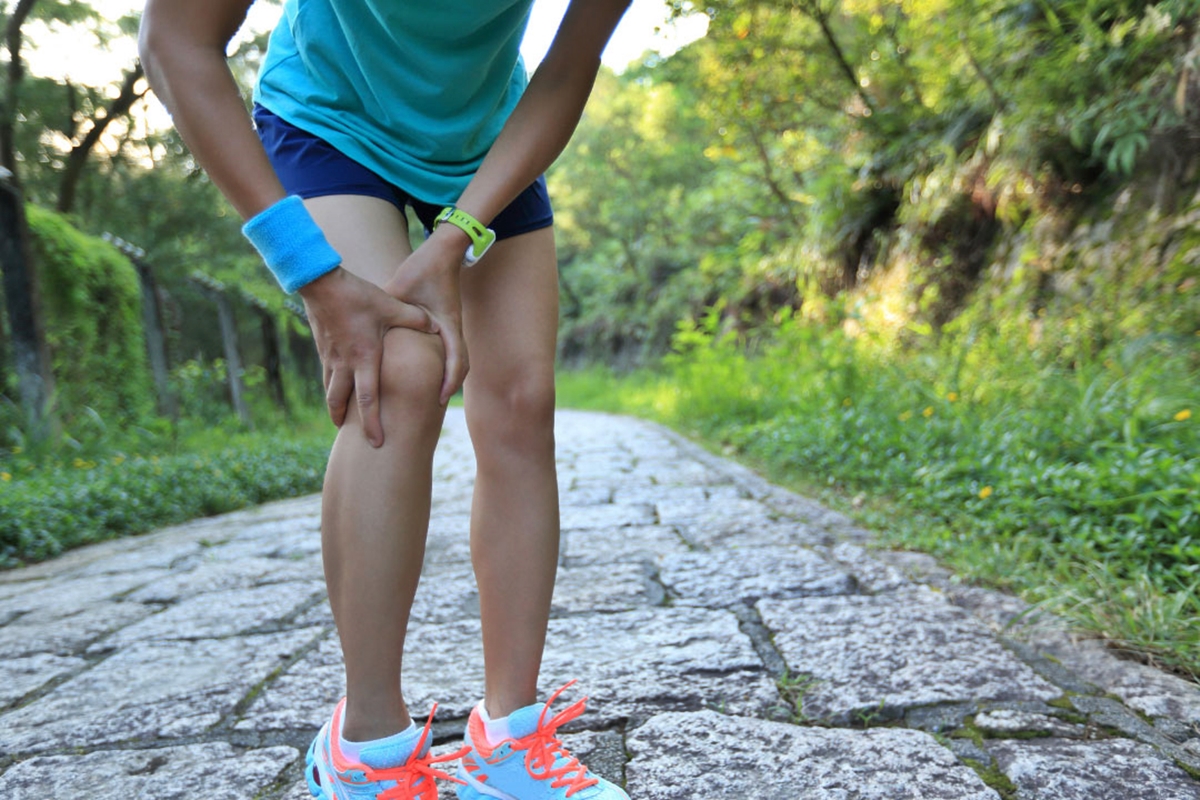

Featured
How To Recover Knees After Half Marathon
Modified: August 21, 2023
Learn the best techniques for recovering your knees after running a half marathon. Featured tips and exercises for a speedy and pain-free recovery.
Introduction
Welcome to this comprehensive guide on how to recover your knees after completing a half marathon. Congratulations on pushing yourself to achieve such a significant athletic milestone! However, the intense training and long-distance running can take a toll on your knees, leaving them sore, stiff, and in need of recovery.
Running a half marathon is a demanding physical activity that places a great deal of stress on your joints, especially the knees. The repetitive impact and strain from running can lead to muscle fatigue, inflammation, and even more serious injuries if not properly addressed.
In this article, we will explore various strategies to help you recover effectively and ensure your knees are back in top shape. From rest and stretching exercises to proper nutrition and professional assistance, we will cover it all.
It’s important to remember that each person’s body is unique, and recovery times may vary. Therefore, it’s crucial to listen to your body and adjust the techniques and duration of recovery activities to your specific needs.
Let’s dive into the world of knee recovery and discover how to give your knees the care and attention they deserve after a demanding half marathon race.
Understanding the Impact on Knees
Before we dive into the various recovery strategies, it’s essential to understand the impact that running a half marathon has on your knees. By understanding the stressors involved, you can better appreciate the importance of taking proactive steps towards knee recovery.
The knee joint is a complex structure that consists of bones, cartilage, ligaments, and tendons working together to provide stability and support during movement. When you run, the knees endure considerable pressure and repetitive impact as your body weight is transferred through the joint with each stride.
The constant pounding on the pavement during a half marathon can result in micro-tears in the muscle fibers, inflammation of the tendons, and stress on the knee joints. This can lead to symptoms such as pain, swelling, stiffness, and reduced range of motion.
Ignoring these warning signs and not prioritizing knee recovery can lead to more severe conditions, such as runner’s knee (patellofemoral pain syndrome), IT band syndrome, or even stress fractures. Therefore, it’s crucial to address knee issues promptly and implement effective recovery strategies to prevent further damage.
Keep in mind that factors such as your running form, the type of shoes you wear, and your training regimen can also contribute to the impact on your knees. Ensuring proper technique and using appropriate footwear can help minimize stress on the knees and reduce the risk of injury.
Now that we have a better understanding of how running a half marathon impacts your knees, let’s explore the various recovery techniques that can aid in your knees’ healing process and get you back on track.
Rest and Recovery
One of the most crucial aspects of knee recovery after a half marathon is allowing your body ample time to rest and heal. Rest is essential as it gives your muscles, tendons, and ligaments the opportunity to repair and rebuild themselves.
After completing a half marathon, it is recommended to take a few days of complete rest from any strenuous activities. This break allows the inflammation to subside and reduces the risk of further aggravating any existing injuries.
In addition to rest, incorporating active recovery techniques can also be beneficial. Light activities such as walking or swimming can help increase blood flow to the knees, promote healing, and reduce stiffness. However, it’s important to listen to your body and not push yourself too hard during these low-impact activities.
During the recovery period, it is advisable to limit excessive sitting or standing for prolonged periods as it can strain the knees. Instead, aim to alternate between sitting and walking to keep your knees engaged but not overloaded.
Applying ice packs to your knees for 15-20 minutes every few hours during the first few days after the race can also help reduce swelling and inflammation. Make sure to wrap the ice pack in a towel or cloth to protect your skin from direct contact with ice.
Getting enough sleep is equally important for proper recovery. Sleep allows your body to replenish energy and repair damaged tissues. Aim for seven to eight hours of quality sleep each night to optimize your knee recovery process.
Remember, rest and recovery techniques are not a one-size-fits-all approach. Listen to your body, and if you experience excessive pain or symptoms worsen, it is essential to consult a healthcare professional for further evaluation and guidance.
Stretching and Flexibility Exercises
Stretching and flexibility exercises play a crucial role in knee recovery after a half marathon. These exercises help improve range of motion, reduce muscle tightness, and alleviate joint stiffness. Incorporating them into your recovery routine can promote healing and prevent future injuries.
There are various stretches that specifically target the muscles surrounding the knees. One effective stretch is the quad stretch, where you stand upright and bend one knee, bringing your heel towards your buttocks and holding the foot with your hand. Hold the stretch for 20-30 seconds and repeat on the other leg.
Another important stretch is the hamstring stretch. Sit on the edge of a chair and extend one leg in front of you, resting your heel on the ground and gently leaning forward while keeping your back straight. Hold the stretch for 20-30 seconds and repeat with the other leg.
Calf stretches are also beneficial for knee recovery. Stand facing a wall and place your hands on it for support. Step one foot forward and keep the knee straight while bending the other knee slightly. Lean forward, feeling the stretch in your calf. Hold for 20-30 seconds and repeat with the other leg.
Additionally, incorporating dynamic stretches such as leg swings and hip circles can help increase flexibility and warm-up the muscles before engaging in any physical activities. These exercises involve moving your legs in a controlled manner, forward and backward or side to side, to gradually loosen up the joints and muscles.
It’s important to note that stretching should be done gently and without bouncing to avoid causing further stress to the knees. If you experience any pain during stretching, reduce the intensity or seek guidance from a qualified fitness professional.
By incorporating stretching and flexibility exercises into your knee recovery routine, you can improve blood flow to the area, promote healing, and restore mobility. Remember to perform these exercises with proper form and consistency for optimal results.
Strengthening Exercises
Strengthening exercises are an important component of knee recovery after completing a half marathon. These exercises help improve the stability and function of the muscles surrounding the knees, providing better support and reducing the risk of future knee injuries.
One of the key muscles to focus on when it comes to knee strengthening is the quadriceps. The quadriceps are the group of muscles at the front of your thigh, and strong quads help absorb impact and reduce stress on the knees.
A common exercise to strengthen the quads is the squat. Stand with your feet shoulder-width apart, and slowly lower your body as if you’re sitting back into a chair, keeping your knees aligned with your toes. Go as low as you comfortably can, then return to the starting position. Start with a few repetitions and gradually increase as your strength improves.
Lunges are another effective exercise for strengthening the quads and other muscles around the knees. Take a step forward with one leg, and while keeping your upper body straight, lower your body until your front thigh is parallel to the ground. Push back up to the starting position and repeat on the other leg.
Don’t forget about the hamstrings, the muscles at the back of your thighs, which complement the quads in knee stability. To strengthen the hamstrings, try exercises such as hamstring curls using a resistance band or using a stability ball for bridges.
Other exercises that can help strengthen the muscles supporting the knees include calf raises, leg presses, and step-ups. These exercises should be performed with proper form, gradually increasing the intensity and resistance as you progress.
It’s important to note that strengthening exercises should be done with caution and under proper guidance, especially if you have existing knee issues or injuries. If you’re unsure about the correct technique or experience any pain, it’s recommended to seek advice from a qualified fitness professional or physical therapist.
By incorporating these strengthening exercises into your knee recovery routine, you can build stronger muscles around your knees, providing better support and stability. Remember to start at an appropriate level for your fitness and gradually progress to avoid overexertion or injury.
Low-Impact Cardiovascular Activities
While rest is crucial for knee recovery, incorporating low-impact cardiovascular activities can help maintain a level of fitness without putting excessive strain on the knees. These activities provide the benefits of cardiovascular exercise while minimizing the impact on your joints.
One excellent low-impact option is swimming. Swimming is a full-body workout that helps increase cardiovascular endurance, strengthen muscles, and improve flexibility. The buoyancy of the water reduces the impact on the knees, making it an ideal activity for knee recovery.
Cycling is another low-impact cardiovascular exercise that can be beneficial for knee recovery. Whether it’s outdoor cycling or using a stationary bike, this activity offers a great workout while minimizing stress on the knees. Adjusting the resistance and intensity levels allows you to customize the workout to your fitness level and recovery needs.
Elliptical trainers are also a popular choice for low-impact cardiovascular exercise. The motion of the elliptical machine mimics running without the impact on the knees. This makes it an excellent alternative for maintaining cardiovascular fitness while recovering from a half marathon.
Walking is a simple yet effective low-impact activity that you can easily incorporate into your daily routine. It helps improve circulation, strengthen muscles, and maintain overall fitness. Start with shorter distances and gradually increase as your knee recovery progresses.
It’s important to choose activities that feel comfortable for your knees and to listen to your body’s feedback. If you experience any pain or discomfort during low-impact activities, it’s advisable to pause and consult a healthcare professional for further evaluation and guidance.
Remember, the goal of low-impact cardiovascular activities during knee recovery is to maintain fitness levels and promote blood flow without placing excessive stress on the joints. By incorporating these activities into your recovery routine, you can continue to stay active while allowing your knees to heal and regain strength.
Proper Nutrition and Hydration
Proper nutrition and hydration are essential components of knee recovery after completing a half marathon. A well-balanced diet and adequate hydration support tissue repair, reduce inflammation, and promote overall healing.
First and foremost, make sure to consume a variety of nutrient-dense foods that provide the necessary vitamins, minerals, and antioxidants for optimal recovery. Focus on incorporating lean proteins, such as chicken, fish, tofu, or beans, which aid in muscle repair and growth.
Include a variety of colorful fruits and vegetables, as they are rich in antioxidants and vitamins that help reduce inflammation and support cellular health. Additionally, whole grains, like quinoa, brown rice, and whole wheat bread, provide long-lasting energy and essential nutrients for recovery.
Omega-3 fatty acids found in foods like salmon, walnuts, and chia seeds have anti-inflammatory properties and can help reduce inflammation in the body. Incorporating these healthy fats into your diet can promote healing and reduce knee pain and swelling.
Hydration is equally important for knee recovery. Drinking enough water throughout the day helps maintain joint lubrication, supports nutrient delivery to the tissues, and flushes out toxins. Aim to drink at least 8-10 cups of water daily, and adjust your intake based on activity level and sweat loss.
In addition to water, consider incorporating hydrating foods into your diet, such as cucumbers, watermelon, oranges, and celery, which have high water content and can contribute to your overall hydration status.
Avoid excessive consumption of processed foods, sugary snacks, and drinks, as they can contribute to inflammation and hinder the recovery process. Limiting your intake of alcohol and caffeine is also recommended, as they can dehydrate the body and impede the healing process.
Remember, proper nutrition and hydration are not only essential during the recovery phase but should also be maintained as part of a healthy lifestyle. By nourishing your body with the right nutrients and staying well-hydrated, you can support your knee recovery and overall well-being.
Using RICE Method for Pain and Inflammation
When it comes to managing knee pain and inflammation during recovery after a half marathon, the RICE method is a tried and true approach. RICE stands for Rest, Ice, Compression, and Elevation, and it offers effective relief for sore and swollen knees.
Rest is the first step in the RICE method. It’s crucial to give your knees ample time to recover by avoiding any activities that may aggravate the pain or swelling. Resting allows the body to focus on healing the damaged tissues and reduces the risk of further injury.
Ice is a powerful tool for reducing inflammation and managing pain. Applying an ice pack to the affected knee for 15-20 minutes every few hours can help constrict blood vessels, decrease swelling, and numb the area, providing relief. Remember to wrap the ice pack in a thin towel to protect your skin from ice burn.
Compression is another essential component of the RICE method. By using a compression bandage or knee sleeve, you can apply gentle pressure to the knee, which helps reduce swelling and provides stability. Ensure that the compression is firm but not too tight, as it can impede blood flow.
Elevation is the final step in the RICE method and involves raising the affected knee above heart level whenever possible. By elevating the knee, you promote drainage of excess fluid and reduce swelling. Use pillows or cushions to support your knee and keep it elevated during periods of rest.
It’s important to note that the RICE method is most effective when implemented within the first 48 to 72 hours after a half marathon. However, it can still provide relief and aid in recovery even if implemented later on.
If the pain and inflammation persist or worsen despite using the RICE method, it’s advisable to consult a healthcare professional for further evaluation and guidance. They may recommend additional treatment options such as over-the-counter pain relievers or further medical intervention if necessary.
Remember to listen to your body and give yourself the time and care needed for proper knee recovery. The RICE method can be a valuable tool in managing pain and inflammation, allowing your knees to heal and regain strength.
Incorporating Foam Rolling and Massage
Foam rolling and massage can be incredibly beneficial for knee recovery after completing a half marathon. These techniques help improve flexibility, relieve muscle tension, and reduce soreness in the knees and surrounding areas.
Foam rolling is a self-massage technique that involves using a foam roller to target specific muscles and release any tightness or knots. Rollers come in various densities, so choose one that suits your comfort level. By applying pressure to the muscles and rolling back and forth, you can increase blood flow, break up adhesions, and promote muscle recovery.
When using a foam roller, focus on the muscles around the knees, such as the quadriceps, hamstrings, and calves. Gently roll back and forth on each muscle group, pausing on any areas that feel particularly tight or tender. Aim for 1-2 minutes per muscle group, and be sure to breathe deeply and relax into the movements.
In addition to foam rolling, incorporating professional massages can provide deeper relief and aid in knee recovery. A skilled massage therapist can target specific areas of tension and use techniques such as deep tissue massage or trigger point therapy to release knots and improve blood circulation.
Massage not only helps relax and rejuvenate the muscles but also promotes overall relaxation and reduces stress levels. High-stress levels can contribute to muscle tension and delay the recovery process, so incorporating massage can have multiple benefits.
It’s important to note that foam rolling and massage should be done gently and within your comfort level. Avoid putting excessive pressure on the knee joint itself and focus on the surrounding muscles. If you experience any pain or discomfort during these techniques, adjust the intensity or consult a professional for guidance.
By incorporating foam rolling and massage into your knee recovery routine, you can help release muscle tension, improve flexibility, and reduce soreness. These techniques offer a therapeutic and relaxing approach to support your knee recovery and overall well-being.
Seeking Professional Help: Physical Therapy and Sports Medicine
For more serious knee injuries or persistent pain after a half marathon, seeking professional help from a physical therapist or sports medicine specialist is highly recommended. These professionals have the expertise to assess and treat knee conditions, providing personalized care and guidance for optimal recovery.
Physical therapy plays a crucial role in knee recovery as it focuses on strengthening the muscles surrounding the knee, improving range of motion, and restoring function. A physical therapist will create an individualized treatment plan based on your specific needs and goals.
During physical therapy sessions, you can expect a combination of exercises, manual therapy, and modalities such as ultrasound or electrical stimulation. These interventions aim to reduce pain, increase strength and flexibility, and improve overall knee function.
A physical therapist will also guide you through proper movement patterns and techniques to prevent future knee injuries. They can provide education on proper running form, footwear selection, and modifications to your training routine to minimize stress on the knees.
In some cases, a sports medicine specialist may be necessary, especially for more severe knee injuries. These specialists are trained in the diagnosis, treatment, and prevention of sports-related injuries. They may order additional diagnostic tests, such as MRI or X-ray, to assess the extent of the injury and develop an appropriate treatment plan.
Sports medicine specialists can offer a range of treatment options, including medication, bracing, injection therapy, and in some cases, surgical intervention. They will work closely with you to provide the most effective treatment approach tailored to your specific condition and recovery goals.
It’s important to remember that seeking professional help early on can greatly improve the chances of a successful recovery. Delaying treatment or self-diagnosing can potentially worsen the condition or prolong the recovery process.
If you’re experiencing persistent pain, swelling, or limited mobility in your knee after a half marathon, don’t hesitate to reach out to a physical therapist or sports medicine specialist. They can provide the expertise and guidance needed to support your knee recovery and get you back on track.
Tips for Preventing Knee Injuries in Future Half Marathons
Preventing knee injuries is crucial for long-term running success and enjoying future half marathons. By implementing these tips, you can reduce the risk of knee-related issues and ensure a smooth and injury-free race.
1. Gradual Training: Avoid increasing your mileage or intensity too quickly. Gradually build up your training volume and intensity to allow your body, including your knees, to adapt to the demands of running.
2. Proper Warm-up: Prioritize a dynamic warm-up that includes exercises like leg swings, lunges, and high knees. This helps activate the muscles and joints, preparing them for the upcoming run.
3. Strengthening Exercises: Incorporate regular strength training exercises that target the muscles around the knees, such as squats, lunges, and calf raises. Strong muscles provide better support and stability for the knees.
4. Cross-Training: Include low-impact activities like swimming, cycling, or yoga in your training routine. This helps reduce the repetitive stress on the knees and provides variation to your workouts.
5. Proper Footwear: Wear properly fitted running shoes that provide adequate cushioning and support for your foot type and running style. Consult with a professional at a specialty running store to find the right shoes for you.
6. Listen to Your Body: Pay attention to any signs of pain, discomfort, or abnormal sensations in your knees. Rest, ice, and seek professional advice if necessary to prevent minor issues from escalating into more serious injuries.
7. Run on Soft Surfaces: Whenever possible, choose to run on softer surfaces like grass or dirt trails. These surfaces provide better shock absorption and reduce the impact on your knees.
8. Maintain Flexibility: Incorporate regular stretching exercises for your entire body, including the muscles around the knees. This helps maintain flexibility and prevents muscle imbalances that can put strain on the knees.
9. Hydration and Nutrition: Stay properly hydrated throughout your training and race day, as it helps maintain joint lubrication and supports overall performance. Follow a balanced diet that provides the necessary nutrients for optimal recovery and injury prevention.
10. Seek Professional Advice: If you have a history of knee issues or are experiencing persistent discomfort, consult with a physical therapist or sports medicine specialist. They can assess your individual situation and provide specific recommendations tailored to your needs.
By implementing these tips, you can minimize the risk of knee injuries, improve your overall running performance, and enjoy future half marathons with confidence and ease. Remember, prevention is key, so prioritize the health and well-being of your knees as you train and prepare for your next race.
Conclusion
Completing a half marathon is a significant achievement, but it’s important to prioritize knee recovery to ensure long-term running success. By following the strategies outlined in this guide, you can effectively recover your knees and prevent future injuries.
Understanding the impact that running a half marathon has on your knees is essential. The repetitive stress and strain can lead to muscle fatigue, inflammation, and potential injuries. By recognizing these factors, you can take proactive steps to support your knee recovery.
Rest and recovery are paramount. Allowing your body time to rest, incorporating light activities, and applying techniques like the RICE method will promote healing and reduce pain and inflammation in your knees.
Stretching and flexibility exercises improve range of motion, reduce muscle tightness, and aid in knee recovery. Strengthening exercises help stabilize the knee joint, while low-impact cardiovascular activities maintain fitness levels without straining the knees.
Proper nutrition and hydration support tissue repair and reduce inflammation. Eating a well-balanced diet and staying adequately hydrated are essential components of knee recovery.
Incorporating foam rolling and massage techniques can help release muscle tension and reduce soreness in the knee and surrounding areas. Seeking professional help, such as physical therapy or sports medicine, is recommended for more severe injuries or persistent pain.
Lastly, implementing tips for preventing knee injuries in future half marathons, such as gradual training, proper warm-up, and cross-training, will significantly reduce the risk of knee-related issues and ensure a successful and enjoyable race.
Remember, every person’s body is unique, so adjust these strategies to fit your specific needs. Listen to your body, seek professional guidance when necessary, and prioritize the health and well-being of your knees for a lifetime of running enjoyment.
